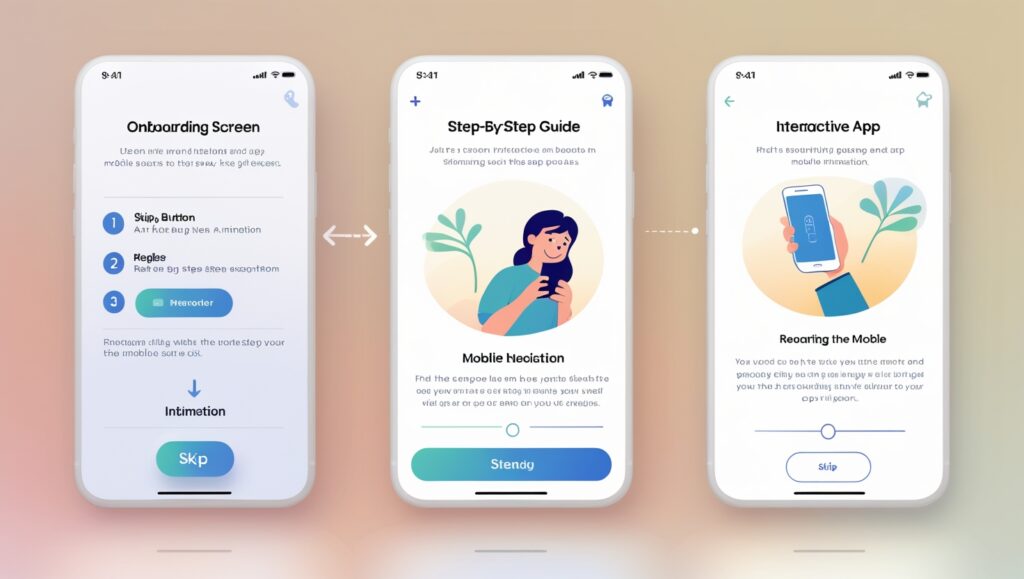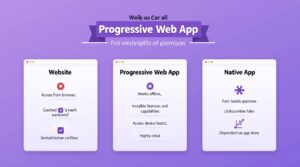click to get service View profile
Improve UX Design for Better User Retention with intuitive onboarding, seamless navigation, fast performance, personalization, and engaging design. Learn top UX strategies to boost user engagement and keep users coming back. A seamless and user-friendly experience is crucial for keeping users engaged and reducing churn. UX Design for Better User Retention focuses on creating intuitive, efficient, and enjoyable interactions that encourage users to return.
User retention plays a vital role in the success of any digital product. While acquiring new users is important, ensuring they remain engaged and consistently return is even more crucial. A poor user experience (UX) is one of the leading causes of user drop-off, making it essential to focus on UX Design for Better User Retention. By optimizing usability, streamlining interactions, and enhancing overall engagement, businesses can create a seamless experience that keeps users coming back.
A well-designed UX can:
- Increase engagement by making the platform intuitive and user-friendly.
- Reduce churn rates by eliminating frustration and confusion.
- Improve conversions by making it easier for users to complete their desired actions.
This guide highlights the most effective UX Design for Better User Retention strategies, helping businesses create seamless, user-friendly experiences that drive engagement and long-term success.
1. Create an Intuitive and Engaging Onboarding Process
The onboarding process shapes a user’s first impression of your product. If it’s complex, lengthy, or unclear, users may quickly lose interest and abandon the platform. A well-designed onboarding experience is essential for UX Design for Better User Retention, ensuring users understand key features effortlessly and feel encouraged to continue engaging with your product.
Best Practices for Onboarding:
- Keep it Simple – Users should quickly understand what your product does and how it benefits them.
- Provide Interactive Walkthroughs – Instead of showing static instructions, use tooltips and interactive guides to explain features.
- Allow Skipping – Some users prefer to explore on their own, so offer an option to skip onboarding.
- Use Progressive Onboarding – Instead of showing everything at once, reveal features step by step as users interact with the product.

Example:
A finance app like Mint simplifies onboarding by asking users a few key questions and then customizing the experience based on their responses.
2. Optimize Navigation and Information Architecture
A seamless navigation experience is essential for keeping users engaged. They should be able to find information effortlessly without confusion or frustration. If the interface is cluttered or difficult to navigate, users are more likely to abandon the platform. Optimizing navigation is a key aspect of UX Design for Better User Retention, ensuring a smooth and intuitive journey that encourages users to stay and explore.
Best Practices for Navigation:
- Use Clear and Concise Labels – Avoid jargon and ensure menu items are easy to understand.
- Implement a Consistent Navigation Structure – Keep the menu, buttons, and key features in familiar locations.
- Ensure a Logical Information Hierarchy – Organize content in a way that prioritizes the most important information.
- Include a Search Function – A well-designed search feature helps users quickly find what they need.
Example:
E-commerce platforms like Amazon have intuitive navigation, allowing users to filter, search, and access categories effortlessly.
3. Improve Website and App Performance
Performance plays a crucial role in user retention, as slow websites or apps can drive users away. Research shows that even a one-second delay in page load time can lead to a 7% drop in conversions and higher bounce rates. Ensuring fast load times and seamless interactions is a key factor in UX Design for Better User Retention, helping to keep users engaged and prevent frustration.
How to Improve Performance:
- Optimize Images and Videos – Use compressed file formats to reduce load times.
- Enable Caching – Store frequently used data locally to speed up loading.
- Reduce Heavy Animations – Excessive animations slow down performance. Use them sparingly.
- Use a Content Delivery Network (CDN) – This helps distribute content faster based on users’ locations.
Example:
Google prioritizes Core Web Vitals, which measure page speed and interactivity, ensuring an optimal user experience.
4. Personalize the User Experience
Users are more likely to stay engaged when a product feels personalized to their needs. By delivering relevant content, recommendations, and experiences, personalization creates a deeper connection with users. This tailored approach is a powerful strategy in UX Design for Better User Retention, ensuring a more meaningful and engaging user experience that keeps them coming back.
Best Practices for Personalization:
- Display Recommended Content – Show users content, products, or features based on their behavior.
- Use Smart Notifications – Send targeted messages at the right time instead of generic alerts.
- Remember User Preferences – Save settings like language, themes, and recently viewed items.
Example:
Netflix excels in personalization by recommending content based on users’ watch history and preferences.
5. Maintain a Clear Visual Hierarchy and Readability
A cluttered and poorly structured interface can overwhelm users, making it difficult for them to navigate and engage with the product. Establishing a clear visual hierarchy ensures that key information stands out, guiding users effortlessly through the experience. Prioritizing clean, organized design is a crucial element of UX Design for Better User Retention, helping users stay focused and engaged.
How to Improve Visual Hierarchy:
- Use Contrasting Colors – Highlight key actions like call-to-action buttons.
- Optimize Typography – Use readable fonts with proper spacing.
- Maintain Consistency – Stick to a defined color scheme and layout to avoid confusion.
- Apply White Space Effectively – Proper spacing between elements enhances readability and usability.

Example:
Apple’s website has a minimalist design that highlights products with strong visual contrast and clear typography.
6. Reduce Cognitive Load
When users are forced to overthink or process too much information at once, they quickly become overwhelmed. This cognitive overload often leads to frustration and eventual abandonment. Simplifying the user experience and reducing friction are essential aspects of UX Design for Better User Retention, ensuring a seamless and intuitive journey that keeps users engaged.
Ways to Reduce Cognitive Load:
- Break Down Tasks into Small Steps – Use step-by-step processes instead of complex forms.
- Minimize Decision Fatigue – Reduce the number of choices on a single screen.
- Use Icons and Visual Cues – Replace text with recognizable icons for quick understanding.
Example:
Google’s simple search interface reduces cognitive load by focusing on one task: entering a search query.
7. Provide Feedback and Error Prevention
Users expect immediate feedback on their actions to feel in control and confident while navigating a product. When feedback is missing or delayed, it can create confusion and frustration, leading to disengagement. Providing clear, real-time responses is a crucial aspect of UX Design for Better User Retention, ensuring a smooth and satisfying user experience that keeps users engaged.
How to Improve Feedback Mechanisms:
- Use Success Messages – Let users know when an action is completed.
- Show Clear Error Messages – Instead of generic “Something went wrong” messages, explain what went wrong and how to fix it.
- Implement Undo Options – Allow users to reverse accidental actions.
Example:
Gmail provides an Undo Send option, preventing users from regretting sending an email too soon.
8. Use Gamification and Engagement Strategies
Integrating gamification techniques makes user interactions more engaging and rewarding, encouraging users to stay active and invested in the product. Features like progress tracking, badges, and rewards enhance motivation and satisfaction. Implementing these strategies is a key component of UX Design for Better User Retention, helping to create a more interactive and enjoyable experience that keeps users coming back.
Effective Gamification Strategies:
- Progress Bars – Show completion status in sign-up forms or onboarding.
- Achievements and Rewards – Offer badges, points, or discounts for frequent usage.
- Challenges and Streaks – Encourage users to maintain daily interactions with the app.
Example:
Duolingo uses gamification by awarding points and streaks to encourage users to continue learning daily.
9. Monitor User Behavior and Iterate Based on Data
User needs and behaviors change over time, making it essential to continuously refine the UX design based on data-driven insights. Regularly analyzing user interactions and feedback allows for meaningful improvements that enhance engagement. An iterative approach is a fundamental aspect of UX Design for Better User Retention, ensuring the experience remains relevant, intuitive, and user-centric.
How to Analyze and Improve UX:
- Use Heatmaps and Click Tracking – Identify where users click and what they ignore.
- Conduct A/B Testing – Compare different UI designs to see what works best.
- Gather Direct Feedback – Run user surveys and usability tests.
- Monitor Retention Metrics – Track drop-off points and make necessary changes.

Example:
Spotify continuously improves its UI based on data analytics and A/B testing, refining recommendations and interface design.
Conclusion
Enhancing UX design is an ongoing process that plays a crucial role in retaining users. By streamlining onboarding, optimizing navigation, personalizing experiences, and ensuring high performance, businesses can craft a seamless and engaging user journey. Prioritizing UX Design for Better User Retention helps create a frictionless experience that keeps users satisfied and encourages long-term engagement.
Applying these UX best practices enhances user satisfaction while directly impacting the success of your product. A well-optimized UX Design for Better User Retention ensures a seamless, engaging experience that keeps users coming back, ultimately driving long-term growth and loyalty.
Next Steps:
- Audit your current UX and identify problem areas.
- Prioritize changes that will have the biggest impact on retention.
- Continuously test and optimize based on user behavior.
An exceptional user experience encourages users to return, fostering long-term engagement. By focusing on UX Design for Better User Retention, you can create a seamless, intuitive journey that keeps users satisfied. Start optimizing your UX today to enhance retention and drive lasting success.

